The Events Happened In 1910-1920
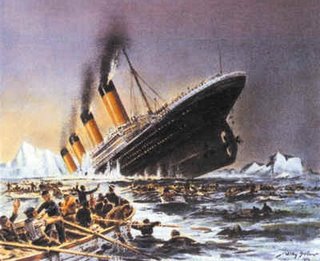
Major Events
The Titanic was the most luxurious ship of her time. She was believed to be the safest ship available at that time; people called it “Unsinkable Ship”. However, at about 11:40 p.m., on April 14, 1912, while the ship was crossing the Atlantic, she strucked in an iceberg. When the ship hit the iceberg, sea waters flooded the ship. Next, the ship broke in half. After two and a half hours, the entire ship sank, then went straight down and lost in the bottom of the ocean forever. The shocking event killed 1,517 people and only 705 people survived that scary night!
www.interet-general.info
www.rootsweb.com
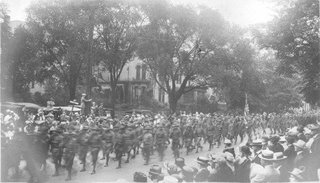
www.historylearningsite.co.uk/ww1.htm
www.interet-general.info
www.rootsweb.com

www.historylearningsite.co.uk/ww1.htm
World War I was the bloodiest war at that time. Americans didn’t join the WWI, but when the Germans attacked a British ship, the Lusitainia. The torpedo killed 128 Americans that were on board. This caused bad feelings between American and the Germans. Some of the main weapons that were used at the front were machine guns, and tanks. For the soldier to protect themselves, they had equipped with a rifle, grenades and knives. The grenades were used to explode enemies close to them. Sometimes, the troops were in the trenches for hours, waiting for action, or waiting for death. About ten million soldiers died on the battlefields during the war. American lost about 112,000 soldier and 200,000 were in the hospital. On November 11, 1918, at 5:00 a.m., Germany signed on the peace agreement. Six hours later, on the "eleventh hour of the eleventh day of the eleventh month," World War I was over!.
Influenza epidemic killed 21.64 million people all over the world. The Influenza spreaded very quickly, faster than anybody expected. The affected areas covered Europe, America and the Orient. The event taught the world about educating the citizens and to control the epidemic not to spread out to other communication.
Outstanding People
Albert Einstein invented theories of relativity and laws of physics that still exist today. In weight or mass, he said, "When moving at high speeds, all of these things get compressed; only the speed of light remains the same." His saying was converted into the equation of E=MC2.
Charlie Chaplin starred in the first full-length feature comedy motion picture of Mack Sennett's Keystone Film Company in 1914. In 1916, he signed with the Mutual Film Corporation to make 12 2-reel comedies including "The Floorwalker", "The Fireman", "The Vagabond", "One A.M.", "The Count", "The Pawnshop", "Behind the Screen", "The Rink", "Easy Street", "The Cure", "The Immigrant" and "The Adventurer". He is still now considered the king of comedy.
http://images.encarta.msn.com/xrefmedia/sharemed/targets/images/pho/t040/T040872A.jsm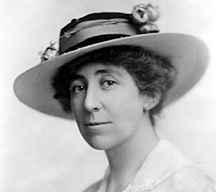 http://www.spartacus.schoolnet.co.uk/USArankin.htm
http://www.spartacus.schoolnet.co.uk/USArankin.htm
 http://www.spartacus.schoolnet.co.uk/USArankin.htm
http://www.spartacus.schoolnet.co.uk/USArankin.htmAs a member of the Republican, Jeanette Rankin becomes the first woman in the US Congress. Rankin, who campaigned for universal suffrage, prohibition, child welfare reform, an end to child labour and staying out of the First World War. She became the first woman to be elected to the House of Representatives. One of her first actions was to introduce a bill that would have allowed women citizenship independent of their husbands.
Inventions
 In 1911, Air conditioning was invented. American engineer and inventor Willis Haviland Carrier developed the formulae and equipment that makes air conditioning workable. It was the world's spraying type air conditioner. Carrier's early work in developing centrifugal refrigeration machines led to new safe refrigerants for which he also received several patents. By controlling humidity as well as temperature, he invented air conditioning as we know it today.
In 1911, Air conditioning was invented. American engineer and inventor Willis Haviland Carrier developed the formulae and equipment that makes air conditioning workable. It was the world's spraying type air conditioner. Carrier's early work in developing centrifugal refrigeration machines led to new safe refrigerants for which he also received several patents. By controlling humidity as well as temperature, he invented air conditioning as we know it today.Not just the air conditioning, in the same year, Cellophane was also 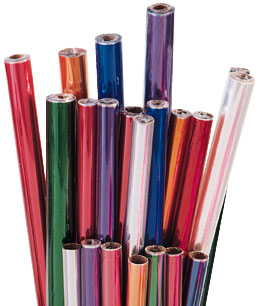 invented. It was invented by Jacques E. Brandenberger , a Swiss textile engineer who first thought of the idea for a clear, protective, packaging layer in 1900. Brandenberger was seated at a restaurant when a customer spilt wine onto the tablecloth. As the waiter replaced the cloth, Brandenberger decided that he would invent a clear flexible film that could be applyed to cloth, making it waterproof. And, that is the beginning of another World's great invention.
invented. It was invented by Jacques E. Brandenberger , a Swiss textile engineer who first thought of the idea for a clear, protective, packaging layer in 1900. Brandenberger was seated at a restaurant when a customer spilt wine onto the tablecloth. As the waiter replaced the cloth, Brandenberger decided that he would invent a clear flexible film that could be applyed to cloth, making it waterproof. And, that is the beginning of another World's great invention.
 invented. It was invented by Jacques E. Brandenberger , a Swiss textile engineer who first thought of the idea for a clear, protective, packaging layer in 1900. Brandenberger was seated at a restaurant when a customer spilt wine onto the tablecloth. As the waiter replaced the cloth, Brandenberger decided that he would invent a clear flexible film that could be applyed to cloth, making it waterproof. And, that is the beginning of another World's great invention.
invented. It was invented by Jacques E. Brandenberger , a Swiss textile engineer who first thought of the idea for a clear, protective, packaging layer in 1900. Brandenberger was seated at a restaurant when a customer spilt wine onto the tablecloth. As the waiter replaced the cloth, Brandenberger decided that he would invent a clear flexible film that could be applyed to cloth, making it waterproof. And, that is the beginning of another World's great invention. Unbelievably, in 1913, Brassiere was invented. Mary Phelps Jacob was granted the first U.S. patent for the brassiere . She was aided in this work by her French maid, Marie. Her invention is most widely recognized as the predecessor to the modern bra, which is used to provide external support for the breasts, increasing comfort and mobility.
Unbelievably, in 1913, Brassiere was invented. Mary Phelps Jacob was granted the first U.S. patent for the brassiere . She was aided in this work by her French maid, Marie. Her invention is most widely recognized as the predecessor to the modern bra, which is used to provide external support for the breasts, increasing comfort and mobility.Others
http://www.britannica.com/eb/article-9054985?tocId=9054985&query=national+hocky+league&ct=ebtocId=9054985&query=national+hocky+league&ct=eb
In terms of sports, the National Hockey League was firstly orgaznied in the Un ited States in 1917. The five canadian teams inspired the idea of forming the league. The NHL became the strongest league in North America and in 1926 took permanent possession of the Stanley Cup , a trophy representing world supremacy in ice hockey. Headquarters are in New York City.
ited States in 1917. The five canadian teams inspired the idea of forming the league. The NHL became the strongest league in North America and in 1926 took permanent possession of the Stanley Cup , a trophy representing world supremacy in ice hockey. Headquarters are in New York City.
 ited States in 1917. The five canadian teams inspired the idea of forming the league. The NHL became the strongest league in North America and in 1926 took permanent possession of the Stanley Cup , a trophy representing world supremacy in ice hockey. Headquarters are in New York City.
ited States in 1917. The five canadian teams inspired the idea of forming the league. The NHL became the strongest league in North America and in 1926 took permanent possession of the Stanley Cup , a trophy representing world supremacy in ice hockey. Headquarters are in New York City. http://hockey-techniques.com/images/virginia%20beach%202005%20photos/close%20up%20on-ice%20bronk%20picture.jpg
http://www.teachersparadise.com/ency/en/wikipedia/n/na/national_football_league.html _football_league.html
_football_league.html
 _football_league.html
_football_league.htmlIn 1920, another league was formed. The National Football League was organized. The APFA adopted the name of the National Football League in 1922. The NFL is the largest and most popular professional American football league in the world. It consists of thirty-two teams from American cities.
In the same year of 1920, the book called The Age of Innocense was written by  Edith Wharton. The Age of Innocence is a novel set primarily in New York’s elite classes in the 1870s. Newland Archer, favored son of "Old" New York, is on the brink of announcing his engagement to lovely May Welland, favored daughter of a family much like his own, when the Countess Ellen Olenska, May’s cousin, returns unexpectedly to New York.
Edith Wharton. The Age of Innocence is a novel set primarily in New York’s elite classes in the 1870s. Newland Archer, favored son of "Old" New York, is on the brink of announcing his engagement to lovely May Welland, favored daughter of a family much like his own, when the Countess Ellen Olenska, May’s cousin, returns unexpectedly to New York.
 Edith Wharton. The Age of Innocence is a novel set primarily in New York’s elite classes in the 1870s. Newland Archer, favored son of "Old" New York, is on the brink of announcing his engagement to lovely May Welland, favored daughter of a family much like his own, when the Countess Ellen Olenska, May’s cousin, returns unexpectedly to New York.
Edith Wharton. The Age of Innocence is a novel set primarily in New York’s elite classes in the 1870s. Newland Archer, favored son of "Old" New York, is on the brink of announcing his engagement to lovely May Welland, favored daughter of a family much like his own, when the Countess Ellen Olenska, May’s cousin, returns unexpectedly to New York.
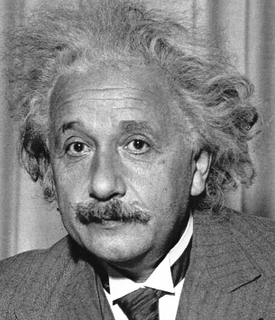
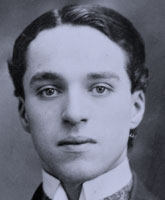

0 Comments:
Post a Comment
<< Home